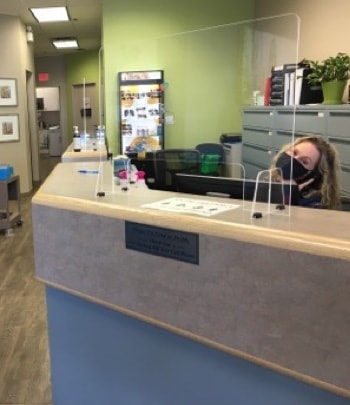AMD typically affects adults over 50. It results from deterioration of the macula—a portion of the retina needed for central vision. People with AMD often face difficulty driving, reading, recognizing faces, and performing other tasks that depend on central vision. Your risk of developing AMD may increase if you smoke or are frequently exposed to UV light.
Vision loss is often the first noticeable symptom of AMD, and without management, it will eventually cause total blindness. Comprehensive eye exams are the best way to detect AMD early so you and your eye doctor can slow its progression.
Glaucoma is the world’s second most common cause of blindness. It results from damage to the optic nerve, which is responsible for sending visual data to the brain. This damage often occurs due to abnormally high pressure within the eye.
Glaucoma gradually erodes peripheral vision at first but eventually leads to total blindness if left unmanaged. Vision loss is usually the first obvious sign of glaucoma, but an eye doctor can detect it during a comprehensive eye exam before it begins to impact your eyesight.
Cataracts obscure your vision by turning the lenses in your eyes cloudy or milky over time. Many people describe the experience as similar to looking through foggy windows. People usually develop cataracts as they age, but other factors may also increase your risk for them.
In many cases, an ophthalmologist can surgically remove cataracts to restore vision. If your vision seems to be changing in ways you can’t explain, contact us and let us help.
Conjunctivitis is a group of infections that inflame the membranes that line your eyes and inner eyelids. These membranes are normally transparent, but conjunctivitis can turn them pink or red—which is why it’s commonly known as “pink eye.”
The most common forms of conjunctivitis are:
- Allergic conjunctivitis: Conjunctivitis due to allergic reactions. It may be caused by exposure to pollen, mould spores, and other substances. Allergic conjunctivitis often brings cold-like symptoms such as sneezing and runny noses. It can also lead to watering, burning, or itching eyes.
- Bacterial conjunctivitis: Conjunctivitis due to bacterial infections. It is highly contagious and can cause a green or yellow discharge. This discharge can harden in your sleep and glue your eyelids together when you wake up.
- Viral conjunctivitis: Conjunctivitis from viral infections. It is easily spread by coughing, sneezing, and hand-to-eye contact. Viral conjunctivitis often causes white or yellow discharge to leak from your eyes and may increase your sensitivity to light.
- Chemical conjunctivitis: Non-contagious conjunctivitis that should be treated as an eye emergency. It occurs when your eyes come into contact with chemicals such as toxins, fumes, or smoke. If you ever get chemicals in your eyes, you should contact your eye doctor immediately.
Not all forms of conjunctivitis can be treated the same way, so you’ll need professional medical assistance to provide the right solution. If you think you might have conjunctivitis, book an appointment with us and find the help you need.







